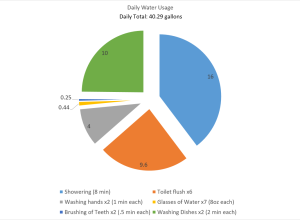Assignment Instructions:
- Research a threat to biodiversity that is located anywhere in the world, be sure to investigate the causes as well possible or current solutions to the matter. Include any other information that will lend a hand in shaping the situation (200-250 words). Next, find another biodiversity threat that is local to your hometown. This threat can be a part of a large scale issue, but make sure it differentiates from the threat you researched earlier in some way. Lastly, compare and contrast the two threats. Be sure to draw course related topics into this analysis (200-250 words).
- With the local biodiversity threat, or the previous investigated threat, draw a systems diagram that shows how personally, or as a community, actions that led to the threat, and the steps to resolve the matter.
In the last two hundred years, the continent of Australia has seen a dip in their biodiversity. Australia is a unique region for biodiversity, because of the isolation of being essentially cut off for thousands of year from the rest of the continents of Earth. Because of this separation, many species have a chance to evolve in or on this isolated continent. For instance, according to The Wilderness Society’s website, documented in December 2015, Australia is the habitat for a huge number of endemic species, which resoundingly outnumbers the number of these species in other global regions. With all this in mind, in the last two centuries, there has been an influx of the human population in Australia. This increase in humans, comes with the increase of urbanization; which has put much strain on the environment as less land is available for flora to inhabit. As humans do best, we also pollute and poison the soil, air and water which further constricts the growth of biodiversity. Some possible solutions to this problem, is to educate the youth of today to respect and appreciate nature and the different environments across Earth. With this, future lawmakers, activists, businessmen/women, and voters will have a better respect for the land, and make sure conservational ideals permeate throughout society.
After doing some research, a local biodiversity threat I found was in the Allegheny Watershed, but in particular, the Upper Allegheny Basin. Located for the majority in the northwestern corner of Pennsylvania, this area is home to a plethora of wildlife and vegetation. I chose this area because I spend much of my time in this area hunting and fishing at my family’s camp located in Forest County. From personal experience of spending a lot of time in the woods, including residential and state game lands, I began to see different petroleum extraction outposts pop up over the last ten years. Once I took the time to research, the basin was facing threats from mineral extraction, insufficient agricultural practices, as well as ill-managed floodplains which allowed rain runoff to negatively affect tributaries and eventually altering the hydrology of the Allegheny River. Both the Australian and the Upper Allegheny Basin’s biodiversity afflicted by human-caused threats. In fact, both have threats that originate from industrial means. On the other hand, Australia is dealing with a growing population (1.8% growth rate) that forces development to encroach on native lands of many species. In the Upper Allegheny Basin, the situation seems to lie with out of date infrastructure, i.e. the inadequate floodplains, as well as toxins leeched into the earth from poor agricultural practices.Mod10Biodiversity

